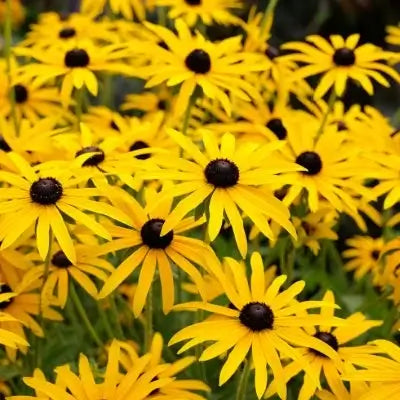Shortleaf Pine Tree Description
The shortleaf pine tree has many uses. Its scientific name is Pinus echinata, and it belongs to the pine family. The scientific name is from the Latin word that means hedgehog. It comes because the cones from the trees have spines similar to the hedgehogs.The southern pine trees have a wide geographic range and are found easily in the southern parts of the US. They also contain a sizable standing volume. Maple trees can grow on different types of soil and ground conditions. Because of this, it makes them among the least fussy trees to plant. They are also able to withstand other vegetation competition compared to other pines.Physical Appearance
The pine tree has a wide girth and is large with a long trunk and open crown. The leaves of the tree are needles. The needles often occur in pairs or sometimes in threes and will be three to five inches long. The spiny needles are long and slender, with a sharp point at the end. They are straight and will be a rich green with hints of blue.The branches are green when fresh but turn grey and brown with a whitish covering when they are old. They will be stiff and brittle with a rough exterior. They are thick and stout when fresh and when aged.The trunk, covered with thick bark, ranges from brown with a reddish tint to black. It tends to be in unevenly large panels.HabitatThe shortleaf pine tree is primarily found in moist to dry areas. They do well in acidic soils from chert, sandstone, or igneous rock substrates. They also thrive when grown in plantations.The tree is found in more than twenty-two states and is the most occurring pine tree in the southeastern United States. PollinationThe tree pollinates between March and April. The tree contains both male and female cones, which shed pollen. The male cones are at the end of the twigs below the female cones, at the top branches of the tree crown. The tree releases a lot of pollen that appears as fine yellow dust. The density of pollen released is to increase the chances of pollination taking place.Pollination takes place by wind because the maple trees do not have flowers to attract insects to pollinate them. When the wind blows, the male cones produce pollen which the wind blows to the female cones and settle on the ovules. The male pollen grains are light, making it easy for the wind to carry them along. After two or three years, the fertilized ovules in the female pinecones mature and become cones.What's the Shortleaf Pine Tree's Purpose in The Ecosystem?
The shortleaf pine tree is valuable in the ecosystem. Because it naturally occurs over a wide range, it affects the trees' soil. Many animals, including small mammals and birds, eat the seeds and twigs.
Top Three Pine Trees to Plant Trees not only beautify a landscape, they also improve the environmental quality. With hotly debated issues like climate change dominating the news, few voices argue against the planting of trees. Pine trees are of particular benefit: they emit oxygen and yield twice as many seeds where CO2 levels are high. In addition, their root systems mount an effective resistance against soil erosion. Meanwhile, they help diversify ecosystems, providing food sources and cover for myriad fauna. When serving as shade, they actually keep energy usage in check during the hot summer months. Certain species are particularly helpful to plant and to nurture.
Three Pines That Stand Out Among Alll Trees
Interspersing pine trees with deciduous species like maples can both adorn and enhance a property landscape.
Loblolly Pine About This Tree
Dominant in the American southeast, Loblolly pines are primarily cut for timber and pulpwood. While reaching maturity in about a century and a half, the Loblolly pine can live up to 300 years. This is about on par with many maple trees. The whitetail deer, gray squirrel and bobwhite quail are known for foraging and nesting in and around Loblollies. Full-grown, this conical, densely-packed tree can reach 110 feet. This fast growing tree bears dark needles and reddish-brown cones.
Things to Consider
The Loblolly pine tree can grow in a wide range of soil textures. Though it thrives in moist conditions, it holds up vigorously and nobly when drought hits.
Short Leaf Pine About This Tree
Whether planted near maple trees or other shrubs, short leaf pine or southern pine yields soft, lightweight wood with a fine grain and limited pitch. It is prevalent in the southeast, though it is found as far north as New York State. Providing food and cover to birds--including wild turkeys--and to smaller mammals, the species called Shortleaf (or Yellow) pine develops a substantial taproot when soil is adequately deep. Reaching nearly 100 feet, this tree can grow straight up or take a crooked path.
Things to Consider
Ubiquitous throughout the south, this pine tree can flourish in a variety of hosts: fertile, agricultural soils, clays and sandy loams. It grows across a spectrum of elevations, and is faster growing in its more mature years. It gets by just fine without consuming many nutrients from the soil.
Southern Yellow Pine About the Tree
Southern Yellow Pine is a term that actually embraces the Loblolly and Short Leaf. It also includes the Long Leaf among its fast-growing trees. This species endures a wide range of habitats, but those optimal environments have dry, sandy, and acidic soils that rest from sea level to about 2,300 feet above. When fully mature--they can live in excess of 300 years--at about 150 years, they will extend into the air about 120 feet while the taproot will plumb 12 feet beneath the surface. The bark is fire-resistant, and these pines weather drought very well, housing endangered species like red-cockaded woodpeckers and indigo snakes.
Things to Consider
This tree has a reputation for strong resistance to climate change, wind buffets, and myriad pests.










































































